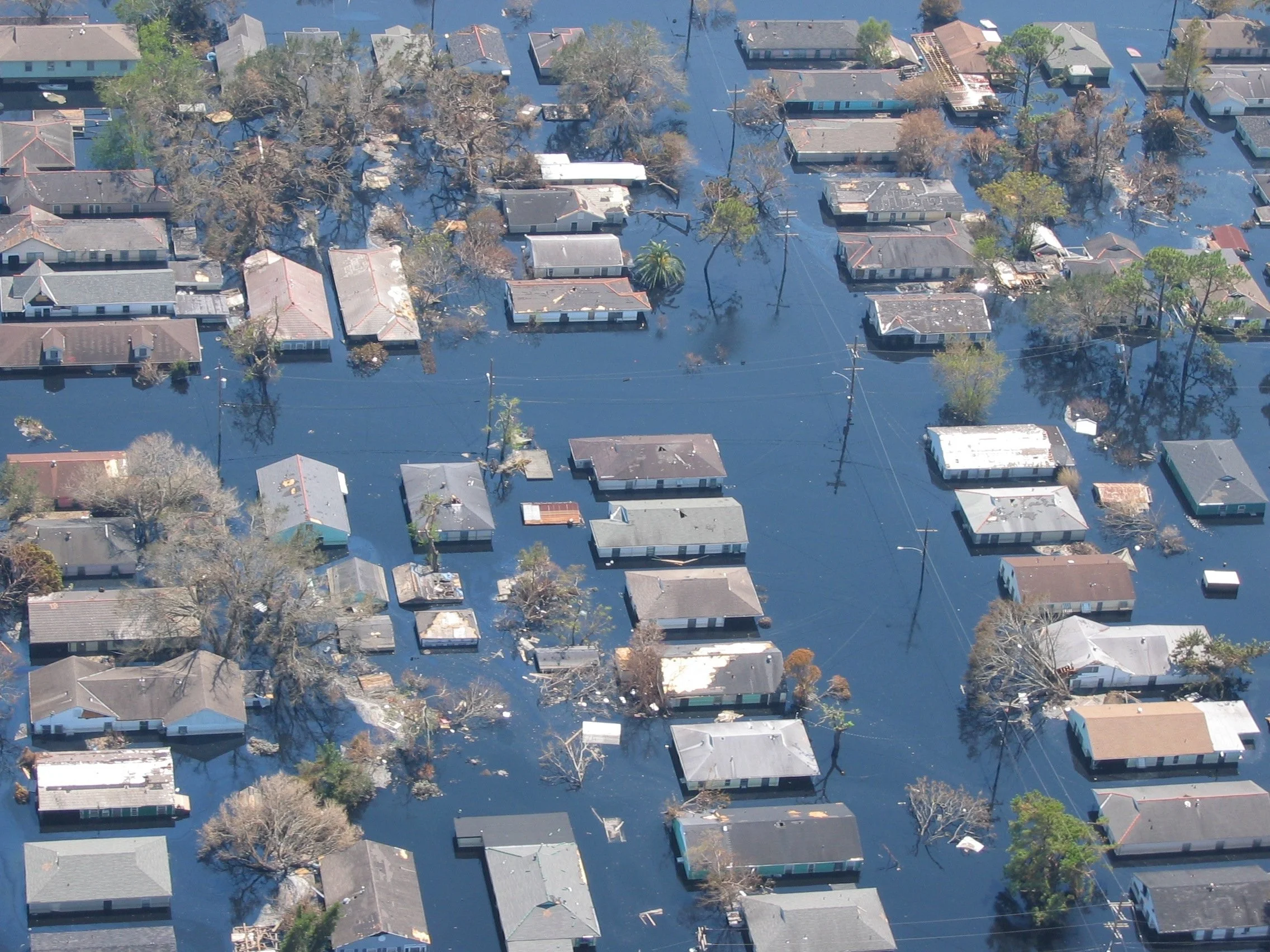Top 5 Life-Saving Hurricane Prep Items: Lessons from History's Toughest Storms
This was the scene all over New Orleans after Katrina came through and the levees broke.
“I thought the water would never reach our front door,” recalls Maria Hernandez, a New Orleans resident who survived Hurricane Katrina in 2005. But when the levees failed and floodwaters surged, Maria and her family scrambled for their lives. Tragically, over 1,800 people lost their lives—mostly by drowning in the relentless, rising water.
Hurricane Katrina remains one of the deadliest U.S. natural disasters. But every hurricane season, thousands face similar life-or-death dangers. While we can’t control the storm itself, we absolutely control how prepared we are. With the right hurricane preparedness gear and plan, lives are saved, injuries prevented, and suffering dramatically reduced.
This guide dives into the top five causes of death during hurricanes, backed by CDC and NOAA data, and reveals the essential gear you need to survive. Whether you live on the coast or inland in a hurricane-prone area, this knowledge could save your life.
*This post contains affiliate links. As an Amazon Associate, we earn from qualifying purchases at no cost to you.
1. Drowning: The Hurricane’s Deadliest Threat
The Facts: Drowning accounts for over 50% of hurricane fatalities, with storm surge being the primary cause. Katrina’s storm surge submerged nearly 80% of New Orleans, leading to thousands of deaths by drowning.
Essential Gear for Flood Safety:
Coast Guard-Approved Life Jackets & Inflatable Floats: Lightweight, easy to store, and fast to deploy—every person in flood-prone zones should have one.
Waterproof, Durable Boots & Clothing: Floodwaters hide debris, glass, and contaminants. Protect your feet and skin to move safely.
Waterproof Dry Bags: Keep your phone, documents, and emergency kits dry and accessible.
NOAA Weather Radio & Storm Surge Alerts: Battery-powered or hand-crank NOAA radios provide real-time weather updates even when power and cell service fail.
2. Trauma: Injuries from Wind and Flying Debris
The Facts: Hurricane winds can exceed 150 mph, turning debris into deadly projectiles. Falling trees and collapsed structures caused many injuries and fatalities in storms like Hurricane Michael (2018).
Life-Saving Gear for Protection:
Heavy-Duty Gloves, Helmets, and Safety Goggles: Protect your hands, head, and eyes when clearing debris or during the storm.
Steel-Toed Boots: Essential for shielding feet from nails, glass, and heavy objects.
Multi-tool Survival Kits: Versatile tools help with cutting, repairs, and emergencies.
Emergency Shelter Tents or Heavy Tarps: Useful if your home is damaged.
First Aid Kits with Trauma Supplies: Immediate care for cuts, punctures, and abrasions reduces risk of infection.
3. Carbon Monoxide Poisoning: The Invisible Killer Post-Storm
The Facts: After hurricanes, power outages lead many to use generators or grills indoors, causing deadly CO poisoning. CDC reports hundreds of CO-related deaths after storms like Hurricane Sandy.
Critical Safety Gear:
Battery-Operated Carbon Monoxide Detectors: Portable detectors alert you to dangerous CO levels.
Safe Portable Generators: Use outdoors and follow all ventilation safety guidelines.
Solar-Powered Chargers & Lanterns: Reduce reliance on gas generators with clean energy.
Battery-Powered Lanterns & Flashlights: Safer alternatives to candles indoors.
Clear Instructional Safety Guides: Keep generator and CO safety info handy.
4. Medical Emergencies & Heart Attacks: Hidden Stressors of Hurricanes
The Facts: Physical and emotional stress during hurricanes can trigger heart attacks and worsen chronic illnesses. The American Heart Association notes increased cardiac events during and after hurricanes.
Medical Preparedness Gear:
Comprehensive First Aid Kits: Include bandages, antiseptics, splints, and essential medications.
Portable Medical Devices: Battery-powered nebulizers, blood pressure monitors, and glucose meters.
Waterproof Medication Organizers: Protect medications from water damage.
Personal Medical Alert Systems: Connect to emergency responders if you need help.
Emergency Food & Water Supplies: Proper nutrition and hydration reduce complications.
5. Hypothermia & Exposure: Fighting the Elements
The Facts: Power outages cause temperature extremes inside homes. Hypothermia can set in from cold, wet conditions, while heat exhaustion threatens in hot, humid climates—especially for vulnerable groups.
Protective Gear for Temperature Control:
Thermal Emergency Blankets & Sleeping Bags: Reflective blankets trap body heat in cold/wet scenarios.
Waterproof, Insulated Clothing: Stay warm and dry during flooding or storms.
Portable Battery or Solar-Powered Heaters/Fans: Provide safe, clean temperature control.
Waterproof Emergency Shelter Tents: Quick protection if your home is compromised.
Cooling Towels & Personal Fans: Prevent heat exhaustion in hot weather.
Bonus: Food and Water – The Foundation of Survival
Though not immediate causes of death, lack of clean water and nutritious food can lead to serious illness and increased mortality after a hurricane.
Must-Have Survival Basics:
Water Purification Systems & Tablets: Portable filters like LifeStraw ensure safe drinking water.
Freeze-Dried Meals & MREs: Lightweight, long-lasting emergency food.
Stockpiled Bottled Water: At least one gallon per person per day for 3+ days.
Final Thoughts: Preparation Is Peace of Mind
Maria Hernandez’s story is a stark reminder that hurricanes don’t just destroy property—they threaten lives. But many tragic deaths are preventable with knowledge and preparation.
Start building your hurricane emergency kit today. When the next storm hits, it won’t be luck that keeps you safe—it’ll be your readiness.







